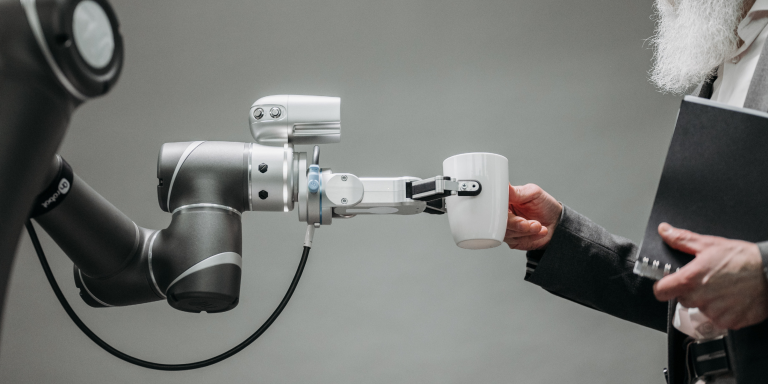
Affordances (from the English verb to afford) are properties of the environment or of an object in it, which, when perceived, allow humans or animals to know how to act in a given context. ELSA is a Franco-Austrian research project that aims to study the learning of social affordances in robots and to equip them with the ability to learn social affordances for a natural and efficient interaction with humans.
Robotics and artificial intelligence scientists are increasingly interested in the concept of affordance and see it as a way to provide robots with more autonomy, as it could allow them to understand which commands sent to their motors produce effects on the environment.
If physical affordances are a step towards autonomous agents that better understand their physical environment, social affordances are also necessary to evolve towards more realistic multi-agent environments, but are very little explored in robotics or AI. They allow humans to learn how to interact appropriately with others, the same learning would allow robots to better interact with humans.
The ELSA project brings together four research institutes, two in France and two in Austria. On the French side, Mehdi Khamassi, Research Director, project coordinator, and Benoît Girard, Research Director, leader of the WP2 work package, represent the ISIR (Institut des Systèmes Intelligents et de Robotique). The LAAS-CNRS, Laboratory of Analysis and Architecture of Systems, is the second French partner.
On the Austrian side, the University of Innsbruck is a partner through the Department of Computer Science (IFI) and the Digital Science Center (DiSC).
The project is funded for 4 years, starting in January 2022, by the ANR on the French side and by the FWF agency on the Austrian side.
Description of the ELSA project by Mehdi Khamassi, project coordinator
What is the project about?
“Study the learning of social affordances in robots. Affordances are opportunities for actions perceived by an agent to interact with its environment. They are of interest to roboticists to describe the potential interactions of the robot with objects beyond simple physical properties.”
The ELSA project team has extended the notion to social affordances, which have so far been little studied in robotics. It hypothesized the following:
- Robots can learn social affordances in the same way that they learn affordances in non-social situations;
- Robots, by learning to autonomously recognize the social affordances of their human partners, will be able to respond more effectively and appropriately to humans. This would facilitate coordination and cooperation between humans and robots.
What is the objective of the project?
“The central goal of the project is to study the conditions that allow a robot to effectively learn social affordances in ways that facilitate communication and cooperation with humans. “
The team studied the problems related to social affordances in robotics and defined 4 lines of work:
- Theory and practice of social affordances;
- Social affordances in decision making;
- Social affordances for action execution;
- Architecture, scenario, integration.
The workstream concerning “social affordances in decision making”, led by ISIR, aims to propose algorithmic solutions so that robots can learn different types of social affordances.
“The objective is to allow robots to learn an internal model of the skills of human agents, so that the robot can progressively distinguish between general and human-specific social affordances. Indeed, and for example, all humans react roughly to a hand signal by waving back. Nevertheless, for some gestures, there may be different reactions.”
What are the possible applications?
According to Mehdi Khamassi, the main application of this work is human-robot interaction, and more specifically, human-robot cooperation. A better understanding of how robots can learn to recognize and express social affordances will allow the design of more cooperative robots, assisting humans in various tasks.
In addition, this project will further the fundamental knowledge of how humans learn, perceive and express social affordances.
Mehdi Khamassi concludes:
” In general, the project addresses a critical lack of basic knowledge about how social affordances are learned and used in the context of human-robot interaction. The major strength of the project is that it addresses a relatively unexplored subfield (social affordances in robotics) that builds on well-studied areas (non-social affordances in robotics, but also in psychology). In the continuity of the previous works of the consortium, the project is highly interdisciplinary and involves complementary expertise. One of the work packages will set up experiments to study the learning of social affordances in humans. One of the main originalities is that these experiments have been designed from questions and hypotheses formulated thanks to the reflection in robotics. We will therefore bring a fresh look at these questions in order to also make a contribution to experimental psychology.”
Translated from Projet ELSA : apprentissage effectif des affordances sociales pour l’interaction humain-robot









